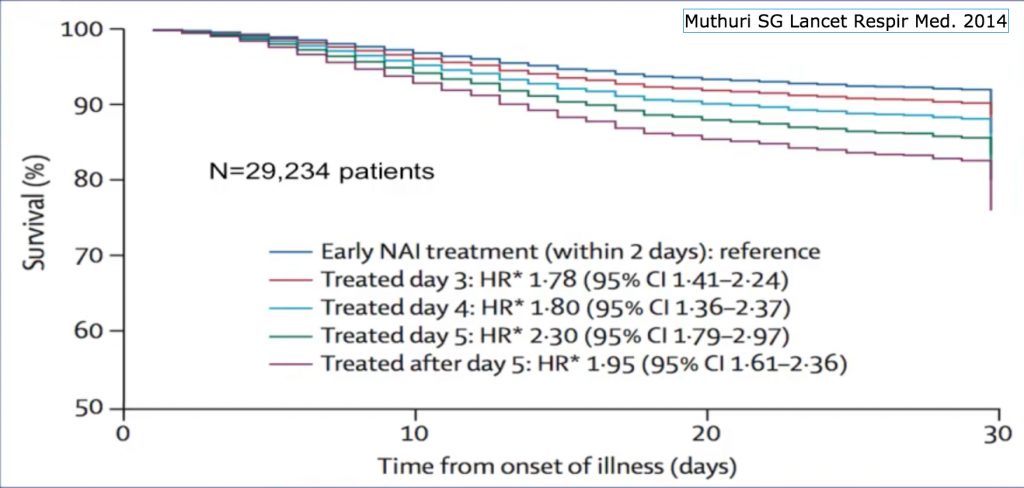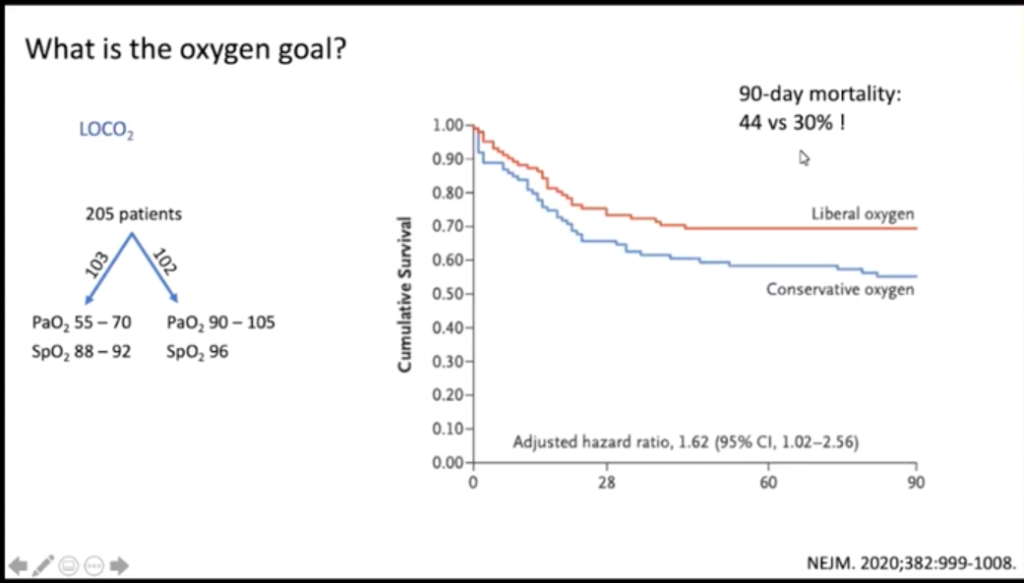Today we are excited to present a Pulmonary Grand Rounds presentation from Daniel S. Chertow, M.D., M.P.H. Dr. Chertow is an Assistant Clinical Investigator in the Critical Care Medicine Department of the NIH and a Special Volunteer in the Viral Pathogenesis and Evolution Section, Laboratory of Infectious Diseases, NIAID. Over the last several years he has solidified his role as a world expert in the field of virology and today speaks on a topic he has published a great deal about, Influenza virus. Tis the season for influenza, and if you ever hope to survive it, you will listen to this talk!
Clinical Pearls
- Influenza virus is a SS RNA virus with surface glycoproteins, HA (hemagglutinin) and NA (neuraminidase)
- Antigens are made to combat the flu by targeting the HA and NA groups
- Antigenic “drift”: the change year to year in the HA groups leading to less immunological protection year to year and a need for new immunizations
- 18 HA + 11 NA subtypes, a combination leads to nomenclature and flu types (H1N1, H5N1….)
- Nearly all found in birds, some in other species of animals (pigs, etc.) as a reservoir
- Pigs and birds are “mixing vessels” that lead to new strains
- Nearly all found in birds, some in other species of animals (pigs, etc.) as a reservoir
- Vaccines are recommended for all persons ≥ 6 months of age
- Recent technology has made them well matched for all circulating strains (including H1N1)
- Influenza B is always a guess, no data showing which will surface
- Recent technology has made them well matched for all circulating strains (including H1N1)
- Antigens are made to combat the flu by targeting the HA and NA groups
- Risk factors for severe disease:
- >65 yo, <5yo
- Obesity, BMI>40
- Pre-existing Resp/Cardiac/Neuro conditions
- Immune suppression
- Pregnancy
- Sialic acids on respiratory epithelium are the preferred binding surface for influenza virions
- Neuraminidase works to make a binding location on influenza- can be targeted for inhibition and thus limit influenza’s virulence
- Influenza predisposes to secondary bacterial damage by damaging epithelial airway linings
- Starts with bronchiolitis → sloughing of epithelial layer→ necrotic debris
- Fills alveoli with proteinaceous materials and inflammatory cells
- Exposes binding sites on the basement membrane, increases bacterial adherence, and immune cell dysfunction
- Increases morbidity and mortality overall (~death in 7 days)
- Bacterial co-infection diagnosis is often delayed or inaccurate as testing is difficult
- Clinical judgement predominates
- Starts with bronchiolitis → sloughing of epithelial layer→ necrotic debris
- Diagnosis: Rapid antigen tests insensitive (50-70%)
- Molecular testing = Gold standard
- Collect nasopharyngeal swab/aspirate or a BAL
- Synthetic NOT cotton swab (will interfere with the assay)
- Collected w/in 7 days of symptom onset (or longer if its a BAL)
- Neuraminidase inhibitors (NAI)
- 5 metaanalyses, 2 Cochrane reviews- Mixed reviews
- In 2014 Munthiri et al. showed that Neuraminidase inhibitors given earlier led to decreased mortality
- 5 metaanalyses, 2 Cochrane reviews- Mixed reviews
- Based on this study we are now treating empirically, especially if early in the course.
- ICU recommendations:
- NAI:
- Oseltamivir 75mg PO BID (90-95% successful at viral treatment)
- Peramivir IV x 5 days for those unable to tolerate enteral route
- Zanamivir IV for those with Oseltamivir resistance (need to contact health officials!)
- Antibiotics
- Cover for CAP and MRSA PNA (reduces mortality)
- Adjunct therapy
- No benefits for rescue modalities for refractory hypoxia
- No benefits for immune modulation (ex: statins)
- Steroids may be harmful
- NAI:
Suggested Reading
- Muthuri SG, Venkatesan S, Myles PR, Leonardi-Bee J, Al Khuwaitir TS, Al Mamun A, Anovadiya AP, Azziz-Baumgartner E, Báez C, Bassetti M, Beovic B, Bertisch B, Bonmarin I, Booy R, Borja-Aburto VH, Burgmann H, Cao B, Carratala J, Denholm JT, Dominguez SR, Duarte PA, Dubnov-Raz G, Echavarria M, Fanella S, Gao Z, Gérardin P, Giannella M, Gubbels S, Herberg J, Iglesias AL, Hoger PH, Hu X, Islam QT, Jiménez MF, Kandeel A, Keijzers G, Khalili H, Knight M, Kudo K, Kusznierz G, Kuzman I, Kwan AM, Amine IL, Langenegger E, Lankarani KB, Leo YS, Linko R, Liu P, Madanat F, Mayo-Montero E, McGeer A, Memish Z, Metan G, Mickiene A, Mikić D, Mohn KG, Moradi A, Nymadawa P, Oliva ME, Ozkan M, Parekh D, Paul M, Polack FP, Rath BA, Rodríguez AH, Sarrouf EB, Seale AC, Sertogullarindan B, Siqueira MM, Skręt-Magierło J, Stephan F, Talarek E, Tang JW, To KK, Torres A, Törün SH, Tran D, Uyeki TM, Van Zwol A, Vaudry W, Vidmar T, Yokota RT, Zarogoulidis P; PRIDE Consortium Investigators, Nguyen-Van-Tam JS. Effectiveness of neuraminidase inhibitors in reducing mortality in patients admitted to hospital with influenza A H1N1pdm09 virus infection: a meta-analysis of individual participant data. Lancet Respir Med. 2014 May;2(5):395-404. [PubMed Link]
- Chertow DS, Memoli MJ. Bacterial coinfection in influenza: a grand rounds review. JAMA. 2013 Jan 16;309(3):275-82. [PubMed Link]
- Chertow DS, Cai R, Sun J, Grantham J, Taubenberger JK, Morens DM. Influenza Circulation in United States Army Training Camps Before and During the 1918 Influenza Pandemic: Clues to Early Detection of Pandemic Viral Emergence. Open Forum Infect Dis. 2015;2(2):ofv021. [PubMed Link]




